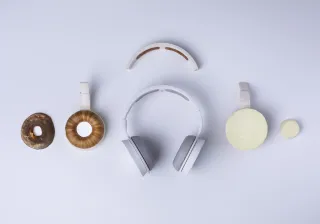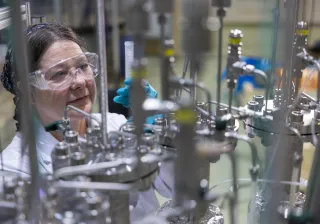Climate change and biodiversity loss are progressing and changing our planet. Population is growing rapidly, and at the same time, access to raw materials is at risk. Stricter standards are being set for responsibility, and the need for sustainably produced food, products, and materials is growing significantly. In addition, uncertainty in global politics forces us to critically consider sustainability and our ability to adjust from new perspectives.
All these issues must be solved with a broad view of sustainability in mind: we are simultaneously building a carbon-neutral economy and moving away from fossil fuels. There is no looking back. We must use our resources more efficiently than before to increase our productivity tenfold – and simultaneously significantly speed up planning and design. This is no small feat, but both necessary and possible. Since we can no longer resort to old methods, we need entirely new products and materials if we wish to continue living a good life in the future.
Solutions arise from three directions
Sustainable products and materials is one of VTT's priority areas. Our research topics are closely related to bioeconomy, circular economy, and digitalization. When we do research and develop solutions, these three areas of expertise often converge, and the point at which they intersect is often where the most impressive innovations occur.
Bioeconomy refers to an economy that relies on renewable natural resources to produce food, energy, products, and services. The aim is to use raw materials wisely and to advance towards higher added value in production. It is also essential to take advantage of the opportunities of circularity – to save resources; close material, energy, and nutrient loops; eliminate waste; and preserve the value of resources for as long as possible. Digitalization allows us to support the transition toward a circular economy and bioeconomy, create new solutions, and enhance operations in many ways.
Wide range in both challenges and solutions
When solving significant challenges, the principle is always the same: there is no silver bullet. This is also the case when developing future products and materials. An excellent example of this is plastic. In the packaging industry, for example, plastic will remain in use long into the future because of its great properties, despite its environmental problems. Legislation has promoted the development of alternative bio-based packaging materials. Nevertheless, replacing plastic is a great challenge; new bio-based materials alone will not solve the problem. We must simultaneously develop solutions and legislation for the recovery and both chemical and mechanical recycling of plastics. At VTT, we work on all these aspects.
Another good example is food production. Our present food system is unsustainable. We consume much more animal protein than our planetary boundaries allow. We urgently need new solutions, and VTT is engaged in pioneering research within the field. We are about to enter the era of cellular agriculture, where microbes and bioreactors can contribute to global food production. However, partly because of EU regulation, innovative development, research, and market entry are advancing slower in Europe than in Asia or North America. Finland needs support and investments to boost cellular agriculture and the renewal of industrial processes and production.
The third example is related to the enablers of the green transition. In the years to come, we will see massive growth in the demand for critical raw materials, such as earth metals and lithium. They are needed for everything, including the electrification of transport, renewable energy sources, and new energy storage technologies. Critical raw materials are a vital part of Europe's resilience. Currently, China practically has a monopoly on rare earth metals. Finland is in the process of amending its mining laws, and the EU is taking measures and making proposals to secure a sufficient supply of raw materials. When people debate how to realize the green transition, the mining industry is seldom among the favourite solutions suggested. Luckily, research and cooperation can offer help. For quite some time, VTT has been developing solutions for utilizing mine tailings and industrial side streams, recycling battery materials, and enhancing mining processes, among other projects. This will help us make the most of scarcer resources.
The materials we use will decide our future
There are lots of questions and challenges and different answers. Regarding sustainable products and materials, the availability and sufficiency of raw materials is not the only thing that matters. The properties of the materials also play a crucial role, and so does making the most of the material flows. Furthermore, there are still existing sources of raw materials that we haven't yet learned to use – not to mention our ability to develop entirely new materials that do not yet exist! In addition, the manufacturing processes of products and materials and the interfaces related to them must be reinvented to make them sustainable, efficient, and safe.
Simply put, all that remains to be done is inventing, developing, and adopting these new materials and products. At VTT, we respond to this challenge through our daily work and new research investments, which promote green transition, resource wisdom, and supply security, while also accelerating reshaping and competitiveness of companies.





